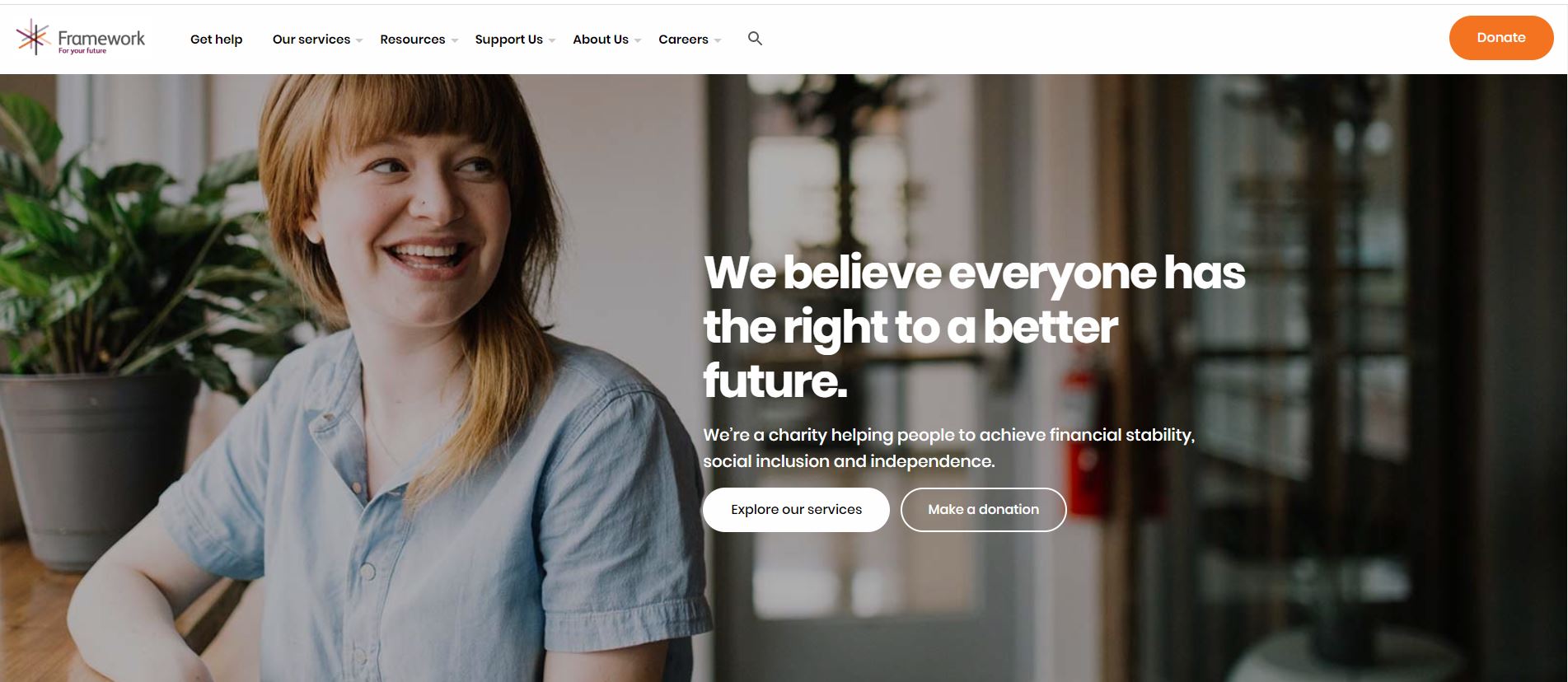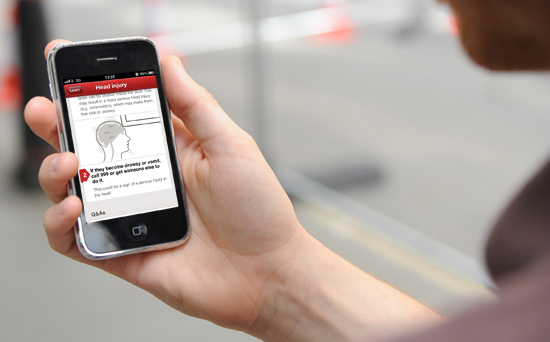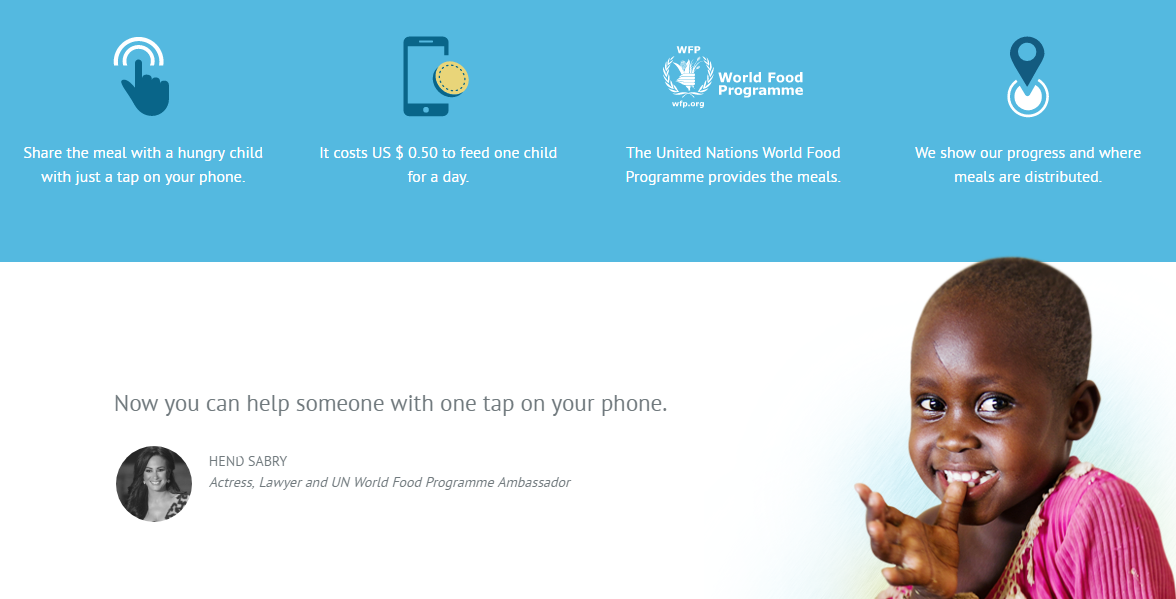Charitable digital marketing campaigns play an essential role in fundraising, building a volunteer base, generating awareness and profile building.
But, according to the Charity Digital Skills Report 2022, only half of UK charities (56%) have a digital strategy in place, with the main barrier being a lack of skills and training to implement it.
Every charity relies on donations to deliver their mission. Whether you’re a charity with a huge nationwide presence like Cancer Research, or a small local charity like The Nottingham Refugee Forum, you still need to implement marketing techniques in order to raise awareness and funds, and gain volunteers.
Digital marketing is the most cost effective way to reach the largest possible audiences.
We all remember the #MannequinChallenge and the Ice Bucket Challenge: the success of both of these campaigns demonstrated the influence that digital marketing can have on fundraising an
d awareness for charities. And yet, so many charities are still missing out on these opportunities that digital can afford them – let alone using it to excel their growth.
Let’s jump right into some practical ways that charities can begin improving their digital marketing.
Resources are essential
It’s so important to take advantage of any dedicated resources available to you. Charity Digital is your first port of call if you’re looking for discounted software – their mission is to help good causes achieve more with the help of digital technology.
The NCVO has a useful overview, including a Digital Maturity Matrix, that will help you review your charities’ current use of digital.
Smart Insights publishes a range of free guides for charities (although some of them require a membership).
Charities get free marketing support from Google
If you’re a not-for-profit organisation, Google offers a whole suite of options for free. Google Ad Grants are one option which can get you up to US$10,000 per month to spend on Google Ads – helping you to spread awareness of your charity’s cause and campaigns. It’s a great tool for raising brand awareness and amounts to a daily budget of US$329 – that’s a lot of advertising money! We’ve written a guide explaining the key policies for Google Ad Grants, so check it out if you think you may be eligible.
Google also provides a not-for-profit licensing for Google suite, including tools like Google Drive, Docs, Calendar, Sheets, Analytics, and Places, and also has a YouTube Nonprofit Programme available.
Charitable support from other major digital marketing brands
The support available doesn’t end there – a huge range of companies provide similar options for charities. Our main advice is to always ask if there is a free or discounted version available, even if it isn’t published on the website.
These are some of the best discounted tools to get you started:
- Hootsuite, the social scheduling tool, has a discount programme of up to 50% off for its unlimited version (the free version is also great if you’re only posting to one channel).
- Mailchimp is an email marketing software that offers discounted subscription rates for charities.
- Canva is an easy to use tool for making social media graphics and other visual marketing materials. Canva offers its premium version free to registered nonprofits.
- Microsoft also offers a range of products for free for NGOs, including licensing for Office 365 and access to their resource library.
Charities don’t tend to have big budgets to spend on marketing, so make the most of the free tools available to you – once these are set up and running for you, you’ll have the time to think of how you want to drive your marketing efforts forward, where you need the most help and if you have some budget to spend on your marketing where you can get some help from an agency.
How to get started with a charitable digital marketing campaign
With resources so precious and scarce, charities need to weigh up how to best utilise their marketing budgets. The first steps towards this include:
- Getting your stakeholders to engage with our marketing – you’ll get more credibility and better results if you can count on your internal and external stakeholders’ support.
- Building a solid and compelling brand message that’s used consistently across your website, social media, and all your communications.
- Keeping your end goal in mind – is it fundraising, awareness, or building a volunteer base?
- Investing in the most appropriate digital marketing tools to help you meet your goals.
- Measuring the success of your digital marketing campaigns, and being ready to pivot if you’re not getting the right return on investment for your spend.
Digital marketing for charities: websites
A charity’s website is like a shop window. It’s a space where they can showcase their values, highlight their cause and encourage people to donate. Many charities are missing out on the opportunities that a website affords them by simply failing to address the basics.
Here are our top tips for where to start:
Use the best charity web platform: WordPress
It’s absolutely essential for charity websites to be built on a user friendly and easily modifiable platform. To achieve this, we’d 100% suggest using WordPress.
- It’s free – you’ll only need to pay for your hosting plan.
- It’s super easy to use with a wealth of information provided for beginners.
- It’s open source – you’ll never have to move to another web design software.
- There’s a huge community of developers, meaning you can work with arange of web designers and individuals who volunteer their time.
- It’s secure – WordPress powers more than 35% of all the websites on the internet.
- It has a huge range of plugins for donations, crowdfunding and more – take a look at this list for some examples.
- It makes it easy to add content by offering hundreds of online guides for you to consult and a huge amount of capabilities.
It’s a much better option than a discounted, bespoke CMS that’s almost impossible to add content to and, more importantly, that isn’t search engine friendly.
Calls to Action
Not only is it essential to ensure a charity website is accessible and easy to use, it’s also pivotal to include strong calls to action that will make it clear what the desired response is from visitors. For most charities, it’ll be a combination of raising awareness, fundraising, and most importantly, making clear your mission, purpose, and values. The large headline and home page messaging in the example above make it clear what the charity’s mission is. Following this with a series of calls to action across the site guides the customer towards making the next desired step.
The large headline and home page messaging in the example above make it clear what the charity’s mission is. Following this with a series of calls to action across the site guides the customer towards making the next desired step.
Website design: best practice
Psychologically, we’re drawn to human faces. Being a very human topic, charities should make use of faces within their website designs but it’s crucial to make sure these are actual affected people rather than stock photography.
Take this example from Rainbows Hospice: The use of the forward facing boy is incredibly important in communicating the charity’s message – this homepage actually features multiple children and the help they receive from Rainbows Hospice. It also uses a convention of web design which taps into the psychological predisposition of the human eye to gravitate toward faces, drawing people in and making their message even more powerful. Check out our case study here to see how else we supported their marketing.
The use of the forward facing boy is incredibly important in communicating the charity’s message – this homepage actually features multiple children and the help they receive from Rainbows Hospice. It also uses a convention of web design which taps into the psychological predisposition of the human eye to gravitate toward faces, drawing people in and making their message even more powerful. Check out our case study here to see how else we supported their marketing.
Charities investing in digital marketing for the future should be reviewing their website design and making use of strong calls to action and the power of faces. They should also make their job easier by choosing easy to use, easily modifiable content management systems to build their sites on from inception; this will only help with marketing efforts in future, as well as making it easy for customers to navigate.
Charities using social media
Social media marketing is an important element of any business’ digital marketing strategy. It provides a huge opportunity for charities to spread their message and engage with potential fundraisers and benefactors.
The Guardian wrote a great overview of successful social media campaigns for charities. One notable example comes from the #FirstFiver campaign in September 2016, when the new £5 note came out in the UK. A corporate fundraising consultant named John Thompson donated his first “new” five pound note to charity. He thought that others may be willing to do the same and so created a Twitter Poll to ask others if they’d like to do so: resulting in the birth of #FirstFiver. Many people jumped on the bandwagon and thousands of people donated to charities – incredibly, the momentum continued with the announcement of the new ten pound note, almost a year later!
Another charity that utilises the power of social media is the NSPCC. With over 404,000 fans on Facebook, the NSPCC boosted its donations and continues to build its profile through its page. What makes it so successful? The page is kept up-to-date, content is posted regularly and the charity interacts with its audience.
Charities looking to grow their digital presence in the future need to be innovative in their use of social media and make use of the many channels available, such as:
- Twitter for sharing behind the scenes stories, success stories, and engaging with key influencers.
- Facebook for fundraising, mobilising their volunteer force, and communicating with their community. See Facebook’s guide for not for profits.
- LinkedIn to recruit talented team members, target specific donors and focus on corporate sponsorship. See LinkedIn’s guide for not for profits.
- Instagram to tell stories, highlight your current activity, and reach a younger demographic. See econsultancy’s guide to using Instagram for charities.
- WhatsApp to build a community of volunteers and stay closer to supporters.
- Snapchat for personalised messages to supporters or to show what you’ve achieved with their donations.
There are so many social channels out there – it’s key for charities to play to their strengths and stick to the ones that speak the most to their audience, as it takes a lot of time to manage.
SEO for charities
SEO (search engine optimisation) is the process through which companies can improve their website’s visibility in the Google search results. For charities, it’s a particularly important digital marketing discipline because it helps to build brand awareness. Whilst big name charities can invest in TV advertising and so on to spread their message, all charities – small or large – should be investing in SEO to build their search visibility for terms related to their brand and cause. For example, if you search on Google for ‘cancer charity’, you’ll find Cancer Research UK very easily. Search ‘children’s charity’, and the NSPCC is right there.
Beyond this, charities need to be thinking more laterally too. For example, we like to participate in fundraising events and raise money for a charity of choice each year. You’ll find a lot of corporate companies do this, and the first port of call is usually to search for new charities to support via a Google search.
So, we searched ‘nottinghamshire charities’ and, even though Headway is just down the road from us, they didn’t show up until the second page of results, while the Lincolnshire and Nottinghamshire Air Ambulance didn’t show up at all. These charities would benefit from reviewing their SEO strategy to ensure they’re optimising their websites for location. Building pages on their site specifically about ‘corporate charity fundraising in Nottingham’ would help businesses to find them and support them.
Think about what other terms people might use to look for a charity. There are nearly 1,600 searches every month in the UK for ‘charity fundraising ideas’ and 210 for ‘charity days’. Optimising SEO for these kinds of keywords can help charity websites to appear for these search terms.
 The future of digital marketing will see savvy charities taking advantage of SEO opportunities by:
The future of digital marketing will see savvy charities taking advantage of SEO opportunities by:
- Reviewing their keyword strategies.
- Focusing on their cause and benefits as well as brand awareness.
- Investing time in blogs, videos and infographics.
- Making sure that each branch of the charity or service offered has its own dedicated page that can be optimised, rather than gathering all content on the homepage like so many charities do.
To help you get started, read our beginner’s guide to on page SEO.
Building cause awareness
With so many charities in the UK today (there are 183,230 registered according to the Charity Commission), it can be difficult for supporters to find the charity that’s right for them. It’s impossible to support all 180,000 – so each charity needs to let people know exactly what their cause is and how your support will help them.
Digital marketing can enable charities to highlight their cause – even if you don’t have the bigger budgets that one might assume the likes of Macmillan could have, SEO and social media are really strong ways for charities to start building association with their cause.
Reaching a national or international audience
Whilst many businesses we meet seek to target specific geographic areas, charities need to reach a far wider audience and causes are often not limited by location.
SEO helps your charity to be found online, whilst social media marketing enables charities to stay in touch and engage with their supporters and fundraisers across the country and even the globe.
The importance of mobile marketing for charities
The possibilities of mobile marketing for charities are extensive, but it all starts with a mobile friendly website – our guide provides a pretty good starting point. Once you’re sorted on that front, possibilities extend from text-to-donate services like Donr donations, which are an easy to use, low cost route to supporting your fundraising efforts via mobile, to the savvier opportunities of mobile marketing which involve using creativity to reach audiences in new ways.
The future of digital marketing for charities will rely very heavily on mobile marketing because it’s a format that allows charities to engage with their audiences at exactly the right moment. Have you just seen a fundraising event taking place in your local town? Donate now on your mobile phone. Just donated? Tweet us now from your mobile phone to let us know. Perhaps you’ve taken a ‘selfie’ with one of our fundraisers? Put it on Instagram and we’ll share it with our followers.
Mobile apps for charities
Mobile apps are another great way for charities to engage with their audiences and we’ve already seen a number of charities doing a fantastic job of this. The Breakthrough Breast Cancer iBreastCheck app received widespread acclaim. The app helped women self-check for the early signs of breast cancer – providing both a useful and life-saving tool, while also raising awareness of a key health issue.
The British Red Cross has an app for first aiders, which shows how to deliver CPR and how to care for people who need first aid. It puts power into the hands of the mobile phone user, reinforcing the important messages of the charity. ShareTheMeal is another fantastic example of a mobile app from a charity.
ShareTheMeal is another fantastic example of a mobile app from a charity.
The use of mobile apps for charities will continue to grow, and charities that want to succeed online will be investing in mobile.
Digital marketing is a wise investment for budget conscious charities
Charities often work with very restricted budgets and it’s important that every penny spent helps the charity to achieve their goals, whether it’s in the form of awareness, fundraising or recruitment.
Digital marketing is the most cost effective way to reach the largest audience possible. When done well, digital techniques such as search engine optimisation (SEO), paid search advertising (PPC) and social media can enable charities to communicate with huge numbers of people very quickly.
Digital is also an area in which brand advocacy really comes into its own. Consider a charity’s loyal supporters; most will relish an opportunity to help spread awareness and if you check, they’re probably already doing it through their personal social media posts. By investing in digital marketing, charities can better equip their supporters to be really valuable brand advocates, too.
So, what are you waiting for?
We’re experts at growing charities. Whether you want a hand in creating charitable digital campaigns, SEO optimisation of your website, or a targeted social media strategy, a member of our team will be happy to help.





